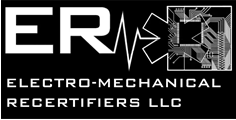White Paper 58 – Revision 2 – by Tony Evans @ Schneider Electric
Introduction
Every piece of data center equipment and every human on earth is engulfed by an ocean of air. This fact is taken for granted to be good for humans, but under certain circumstances the air surrounding IT equipment can be harmful to internal electronic components and lead to failure and downtime. The water vapor contained in air protects IT equipment from dangerous static electrical discharge. Reliance on precision cooling solutions to maintain the proper humidity level in a computer room or data center does not always assure proper humidity levels at the IT equipment air intake. This paper explains the nature of humidity, its effects and its management in computer rooms and data centers. Educated IT professionals can leverage knowledge about data center humidification to increase equipment availability and reduce operational costs.
The nature of humidity in the IT environment
Air is made up of a combination of gasses which include nitrogen (78%), oxygen (21%), carbon dioxide (0.3%), and water vapor. The water vapor in air is known as humidity. Air in the IT environment containing the proper amount of water vapor plays an important role in maximizing the availability of computing equipment. Air containing too much or too little water vapor directly contributes to reduced productivity and equipment downtime.
How humidity is quantified
The amount of water normally contained in air is actually very small. One pound of normal data center air (air can be weighed) occupies about 13.6 cubic feet (.385 m³) of space and contains about 1/7th of an ounce (4.22 ml) of water. As an example, the air inside a small data center measuring 30 feet by 20 feet (9.1 by 6.09 meters) and having a 10-foot (3.04 meters) ceiling will contain just over 63 ounces (1863 ml) of water vapor under normal
conditions. The amount of water that can be contained in this volume of air, however, is not fixed. As air temperature increases the air has the ability to hold more and more water vapor. As air temperature decreases, the air’s ability to hold water decreases.
IT professionals should familiarize themselves with two key terms. The first term, relative humidity (also known as RH), is always expressed as a percentage from 0% to 100% and represents the percentage of water vapor in the air relative to the maximum amount of water vapor the air can hold at a given temperature. For example, if the temperature in the small data center described in the previous paragraph above were 73°F (22.7 °C), the 63 ounces (1863 ml) of water vapor contained in the air would equate to a relative humidity of 50%. If the relative humidity is zero, then no water vapor present. If the relative humidity is 100%, then the air is holding all the water vapor it possibly can. The second term, dew point, is always expressed as a temperature. Dew point is the temperature at which water vapor leaves the air and appears on objects as liquid water. For example, when an aluminum can containing a cold liquid is left outside on a warm summer day, droplets of liquid water form on the can. This happens because the cold drink cools the surrounding air to a temperature lower than the air’s dew point. The air has more water vapor than it can hold at its new lower temperature and the extra water vapor leaves the air as liquid water droplets on the can. In our small data center example above any object
(including IT equipment) that cools the surrounding air to a temperature below about 54°F (12.2 °C) will cause liquid water to condense upon it.
Relative humidity and dew point are related terms. In fact, the dew point for air at a given temperature will rise as the air’s relative humidity increases. When air reaches 100% relative humidity the air’s dew point is always equal to its temperature and the air is considered saturated.

Recent Comments